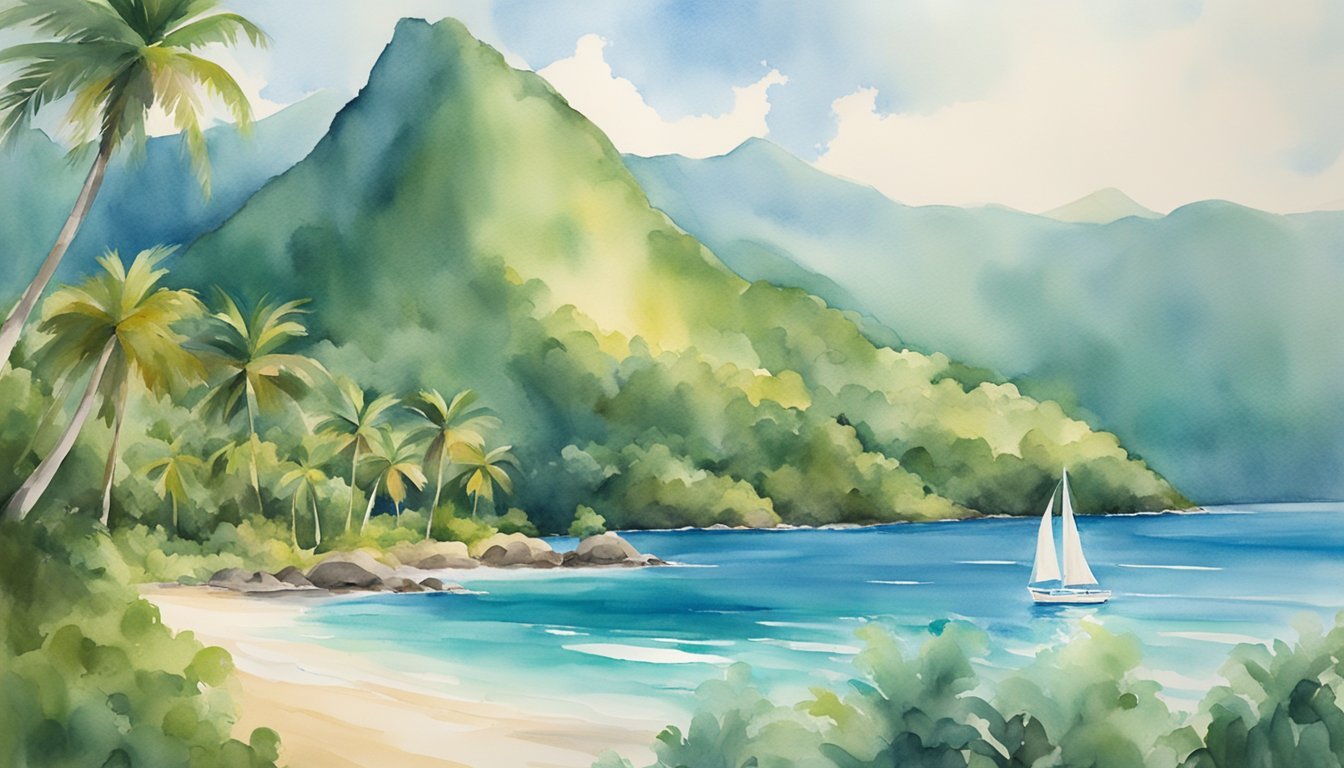Geography and Climate of Puerto Rico

The Islands and Topography
Puerto Rico, a Caribbean archipelago and unincorporated territory of the United States, is primarily composed of a main island and a group of smaller islands, including Vieques, Culebra, and Mona. The islands are located between the Caribbean Sea and the Atlantic Ocean, with the capital city, San Juan, boasting one of the biggest and best natural harbors in the Caribbean.
The topography of Puerto Rico is largely mountainous and hilly, with nearly one-fourth of the island covered by steep slopes. The mountains are the easternmost extension of a tightly folded and faulted ridge that extends from the Central American mainland across the northern Caribbean to the Lesser Antilles source. The island’s highest peak, Cerro de Punta, reaches an elevation of 4,390 feet (1,338 meters) source. Fertile coastal plains and numerous rivers also contribute to the island’s lush and diverse ecosystem.
Weather Patterns and Natural Disasters
The climate of Puerto Rico is predominantly tropical rainforest, with average temperatures ranging from 85 °F (29 °C) in lower elevations to 70 °F (21 °C) in mountainous areas. The island experiences easterly trade winds year-round and has a rainy season that typically extends from April to November.
El Yunque, a prominent rainforest on the island, is the only tropical rainforest in the United States National Forest System, attracting countless visitors each year. Puerto Rico’s beautiful beaches and vibrant marine life make it a popular destination for tourists and researchers alike.
Due to its location in the Caribbean, Puerto Rico is susceptible to natural disasters such as hurricanes and earthquakes. The island lies near the Puerto Rico Trench, the deepest part of the Atlantic Ocean, which can potentially generate powerful earthquakes and tsunamis.
To summarize, Puerto Rico’s diverse geographic features, including mountains, coastal plains, and rainforests, combine to create a stunning and unique landscape. The island’s tropical climate and weather patterns contribute to its rich biodiversity, making it an enchanting destination for visitors and scientists alike.
Culture, History, and Political Status
Cultural Identity and Language
Puerto Ricans, also known as Boricuas, have a blended cultural identity consisting of Spanish, U.S., and Afro-Caribbean influences. Spanish and English are the two official languages of Puerto Rico; however, Spanish is the more widely spoken of the two. Puerto Rico’s cuisine is a unique mix of ingredients, with dishes such as arroz con gandules (rice with pigeon peas) being a popular choice among the locals, combining rice with ingredients from Africa, Spain, and the Americas.
Historical Overview
The history of Puerto Rico traces back to the settlement of the Ortoiroid people before 430 BC and the arrival of the Taíno culture. The island entered the global stage when Christopher Columbus arrived in 1493 and named it San Juan Bautista. However, it later changed its name to Puerto Rico, meaning “rich port,” due to the impressive amounts of gold found in its rivers.
The Spanish colonization, led by Juan Ponce de León, significantly shaped Puerto Rico’s history. The Treaty of Paris in 1898, which followed the Spanish-American War, transferred Puerto Rico from Spanish control to the United States. The U.S. then granted citizenship to Puerto Ricans in 1917 through the Jones-Shafroth Act.
Political Structure and Relationship with the United States
Puerto Rico holds a unique political status; it is a U.S. territory and also referred to as a commonwealth. Puerto Ricans are considered U.S. citizens but do not have the same voting rights in presidential elections and lack representation in the U.S. Congress. The island sends a Resident Commissioner to the U.S. Congress, but this representative cannot vote on legislation.
Throughout the years, Puerto Rico has struggled with defining its relationship with the United States. There have been several referendums where the Puerto Rican population expressed their views on independence, statehood, or maintaining the status quo as a commonwealth. In a recent 2020 referendum, a slim majority of the population voted in favor of pursuing statehood. However, the decision ultimately depends on the U.S. Congress’s approval.
In conclusion, Puerto Rico is an island with a culturally rich history and a complex political relationship with the United States. This U.S. territory is a mixture of Spanish, U.S., and Afro-Caribbean heritage, which is evident not only in its vibrant culture and traditions but also in the ongoing political struggle for a definitive status within the United States.

